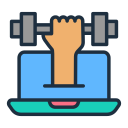Developing Custom Fitness Routines: Build a Plan That Fits Your Life
Start With Your Why: Goals That Shape Every Choice
Define Specific, Measurable Outcomes
Replace vague aims like “get fit” with clear milestones such as “complete eight strict push-ups” or “walk 8,000 steps five days weekly.” Clear benchmarks sharpen your focus, boost motivation, and make weekly adjustments obvious instead of mysterious.


Audit your week honestly. Identify two or three reliable windows as short as fifteen minutes. Research shows even brief, repeated bouts accumulate benefits. Protect those windows with calendar blocks and reminders that treat training like any essential appointment.

List what you have: resistance bands, a single kettlebell, stairs, or a nearby park. Your custom plan should spotlight these tools, not wish for others. Translate obstacles—like small spaces—into opportunities for circuits, intervals, and minimalist strength work.

Enjoyment predicts adherence. If you hate treadmills but love music, choose tempo runs outdoors or dance-based intervals. The right modality keeps you returning, turning discipline into habit and your custom routine into a rewarding daily ritual.
Build Your Blueprint: Weekly Structure and Session Design
For three-day schedules, consider full-body sessions with different emphases: push–pull–legs elements each day. With four days, try upper–lower pairs. Prioritize the lifts and cardio that most directly progress your single biggest goal right now.
Build Your Blueprint: Weekly Structure and Session Design
Start with cornerstone movements that deliver the highest return for your goal—squats, hinges, presses, pulls, carries, or intervals—then add accessories sparingly. Keep a short list of swaps ready so travel or a crowded gym never cancels your session.


Track, Learn, Adjust: Data-Driven Customization
Track only what informs action: total sets per muscle, weekly step count, sleep hours, RPE, and mood. Simple color codes—green, yellow, red—help you pivot intensity and volume before fatigue turns into a frustrating plateau.
Track, Learn, Adjust: Data-Driven Customization
If performance or motivation dips for two weeks, reduce volume ten to twenty percent, swap one exercise, or add rest. Small, timely tweaks preserve momentum and keep your custom routine aligned with your changing capacity and stress levels.
Match your warm-up to the session: joint prep, light activation, and specific ramp-up sets. Five to eight focused minutes elevate performance, reduce perceived exertion, and mentally transition you into quality work instead of rushed, risky reps.
Movement Quality, Recovery, and Safety: Non-Negotiables
Schedule sleep like training. Aiming for consistent bedtimes outperforms occasional long nights. Include low-intensity days, walking, and mobility to restore freshness. Your custom routine should plan recovery as deliberately as hard sessions.
Movement Quality, Recovery, and Safety: Non-Negotiables
Motivation That Lasts: Habits, Identity, and Community
Anchor sessions to existing routines: morning coffee, lunch break, or school drop-off. Lay out shoes and bands the night before. These small, visible cues remove friction and make your custom plan the default choice, not a daily debate.


Motivation That Lasts: Habits, Identity, and Community
Find one training buddy or an online thread where you post a weekly summary. Friendly check-ins and shared wins convert intention into action. Comment your plan for the next seven days and tag a friend to join you.
